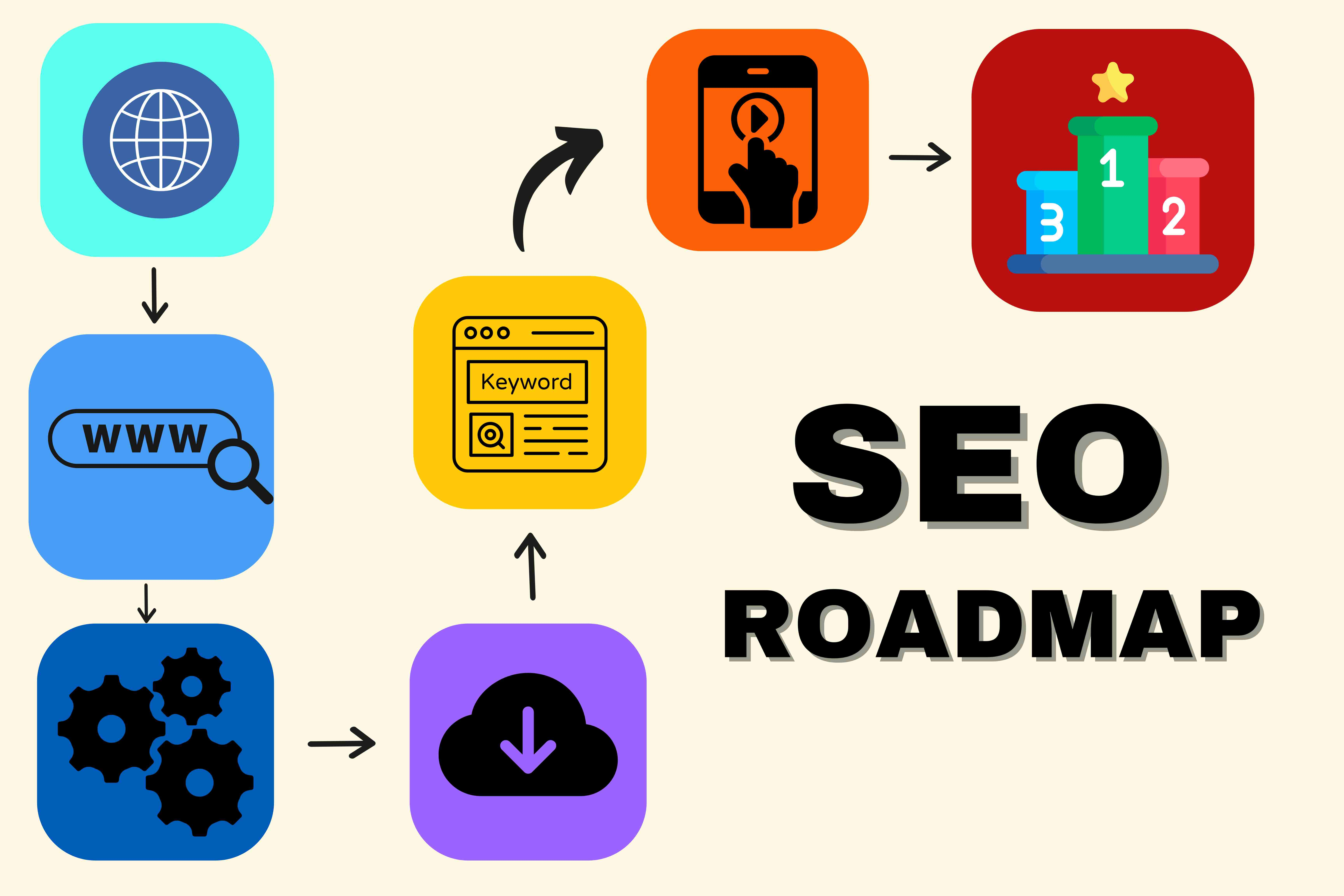In today’s competitive digital landscape, business owners must have a strategic plan to increase their online store’s visibility and drive organic traffic. A well-structured personal SEO roadmap provides a clear path to achieving long-term success with search engine optimization (SEO). This guide will help you create your personalized SEO strategy with actionable tips and explore the latest SEO trends for 2024.
Table of Contents
- What is a Personal SEO Roadmap?
- Steps to Create Your Personal SEO Roadmap
- Latest SEO Trends to Include in Your Roadmap
- Conclusion
- About Don Hesh SEO
What is a Personal SEO Roadmap?
A personal SEO roadmap is a strategic plan tailored to your specific business goals that outlines the steps you need to take to improve your website’s search engine ranking and increase organic traffic. It helps you prioritize SEO tasks, monitor progress, and make informed decisions to stay competitive in your industry.
Developing a personal SEO roadmap provides a clear vision of what needs to be done to achieve measurable SEO success. Whether you’re launching a new online store or enhancing an existing one, a personalized approach ensures that your SEO efforts align with your business objectives.
Steps to Create Your Personal SEO Roadmap
1. Conduct an SEO Audit
The first step in creating an SEO roadmap is conducting a thorough SEO audit of your website. This involves evaluating your site’s current SEO performance, identifying areas of improvement, and analyzing factors such as:
- Website structure and navigation
- Page speed and mobile-friendliness
- Existing content optimization
- Current keyword rankings
- Technical SEO issues (broken links, missing alt tags, etc.)
Use SEO tools like Google Search Console, Ahrefs, or SEMrush to conduct the audit and identify critical issues that need addressing.
2. Define Clear SEO Goals
Once you’ve completed the audit, it’s important to set specific and measurable SEO goals. Your goals will guide the rest of your roadmap and help you focus on the right tasks. Some common SEO goals include:
- Increasing organic traffic by a specific percentage
- Ranking on the first page of search results for targeted keywords
- Improving website speed and user experience
- Boosting conversion rates from organic search traffic
Ensure your goals are SMART (Specific, Measurable, Achievable, Relevant, Time-bound) to track progress effectively.
3. Research and Optimize Keywords
Keyword research is the foundation of any SEO strategy. Identify high-traffic, low-competition keywords relevant to your business and industry. This includes:
- Short-tail keywords (e.g., “online clothing store”)
- Long-tail keywords (e.g., “best organic baby clothes online”)
- Local SEO keywords if you have a physical store (e.g., “bookstore in Melbourne”)
Use keyword research tools like Google Keyword Planner or Moz to find the right keywords. Incorporate these keywords naturally into your website content, meta tags, headers, and URLs to improve your site’s search visibility.
4. Develop a Content Strategy
Content is a key driver of SEO success. A comprehensive content strategy will ensure your site remains relevant, authoritative, and valuable to users. Focus on:
- Blogging regularly: Share informative blog posts on topics related to your industry, answer customer questions, and provide solutions to common problems.
- Product/service pages: Optimize product descriptions with targeted keywords and include relevant images and customer reviews.
- Content optimization: Update old content to keep it relevant and aligned with current SEO best practices.
Incorporating multimedia elements like videos, infographics, and high-quality images can further enhance user engagement and search rankings.
5. Focus on Technical SEO
Technical SEO is essential to ensure that search engines can crawl, index, and understand your website properly. Some key technical aspects to focus on include:
- Site speed: Improve load times by compressing images, minifying code, and leveraging browser caching.
- Mobile-friendliness: Ensure your website has a responsive design that works seamlessly on all devices.
- Structured data: Implement schema markup to help search engines understand your content better and enhance your chances of appearing in rich snippets.
- XML sitemaps: Create and submit an updated sitemap to Google to improve indexing.
6. Build Quality Backlinks
Backlinks from authoritative websites signal to search engines that your site is trustworthy and valuable. Some ways to build quality backlinks include:
- Guest posting on reputable industry blogs
- Collaborating with influencers or partners to share your content
- Earning mentions in online media or press releases
Focus on acquiring natural backlinks from high-authority websites relevant to your niche.
7. Track and Measure Performance
Finally, track your SEO progress and measure key performance indicators (KPIs) regularly to understand what’s working and what needs improvement. Key metrics to monitor include:
- Organic traffic growth
- Keyword rankings
- Bounce rate
- Conversion rate from organic traffic
- Backlink profile
Use tools like Google Analytics and Google Search Console to track these metrics and adjust your SEO strategy based on the data.
Latest SEO Trends to Include in Your Roadmap
1. User Experience and Core Web Vitals
Google’s Core Web Vitals update emphasizes the importance of user experience in SEO. Metrics like page load time, interactivity, and visual stability are now critical ranking factors. Prioritize improving your website’s performance in these areas to stay competitive.
2. Voice Search Optimization
With the rise of voice-activated devices like Alexa and Siri, optimizing for voice search is becoming increasingly important. Focus on conversational keywords and questions users might ask in a voice search, such as “Where can I find organic skincare products near me?”
3. AI and Machine Learning in SEO
Artificial intelligence (AI) and machine learning are reshaping how search engines rank websites. Google’s RankBrain algorithm, for example, uses AI to better understand search queries. Incorporate AI tools to analyze SEO data, automate keyword research, and predict SEO trends.
4. Visual Search and Image Optimization
As visual search engines like Google Lens gain popularity, optimizing images with proper alt tags, file names, and descriptions will improve your chances of ranking in image search results. Make sure your visual content is high-quality and relevant to your audience.
Conclusion
Creating a personal SEO roadmap tailored to your business’s needs is the key to achieving long-term online success. By setting clear goals, optimizing your website’s technical and content aspects, and staying updated on the latest SEO trends, you can improve your site’s search engine ranking and drive more organic traffic. A well-executed SEO strategy will help you stand out in your industry and connect with your target audience effectively.
About Don Hesh SEO
Don Hesh SEO is a leading SEO consultant and Google Ads consultant dedicated to helping businesses enhance their online presence and drive organic traffic. Our expertise in AI-driven SEO strategies ensures that your business stays ahead of the competition. Partner with SEO Sydney to leverage the latest AI technologies and achieve your SEO goals efficiently and effectively.



